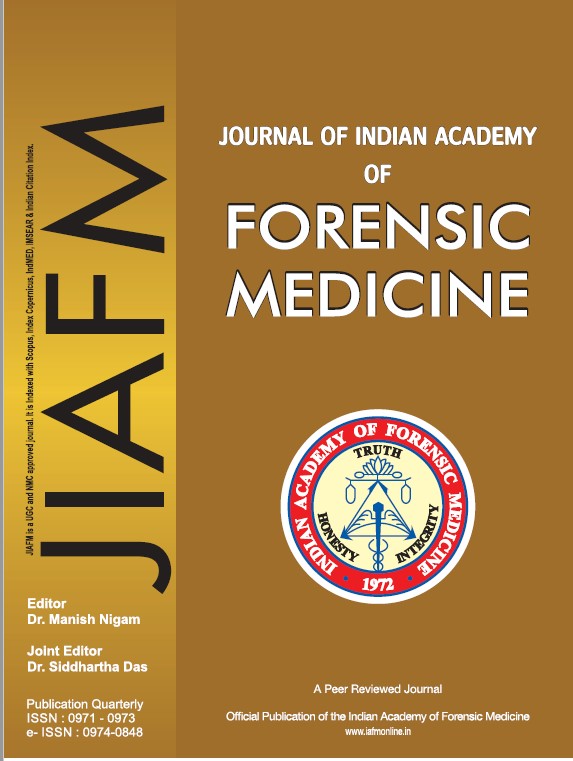The Difference of Mandibular Dimensions Using Cone Beam Computed Tomography for Sex Determination in Forensic Odontology: A Systematic Literature Review
DOI:
https://doi.org/10.48165/Keywords:
Mandibular Dimensions, Cone Beam Computed Tomography, Sex DeterminationAbstract
Mandibular assessment using cone beam computed tomography (CBCT) can accurately provide the measurements for reconstructing and imaging of craniofacial structures in sex determination. The aim of this study was to determine the difference of mandibular dimensions between male and female and the greater mandibular measurement for sex determination using CBCT. Searching literatures was assisted by, into consideration four journal databases including PubMed, EBSCO, Pro Quest, and Google Scholar until March 3, 2021 with PRISMA method and relevant keywords. Review of literature quality was done by Newcastle-Ottawa Quality Assessment Scale (NOS). Inclusion criteria were population (male and female mandibles), intervention (CBCT), and outcome (differences of mandibular measures in males and females). Eight literatures were used in the study to analyze the difference of mandibular dimension with total sample of 1252 mandibles. Mean of mandibular dimensions through bigonial breadth, bicondylar breadth, ramus length, mandibular length, minimum ramus breadth, and gonial to gnathion length were significantly higher in males than females. Mean of gonial angle measure was significantly higher in female than male according to Tassoker et al, Abofakher et al, and El-Fotouh et al. Conversely, Gamba et al. showed the mean value of gonial angle was significantly higher in males than females. The most accurate mandibular measurement sorted from seven literature studies were bigonial breadth, ramus length, gonial angle, bicondylar breadth, mandibular length, minimum ramus breadth, and gonial to gnathion length. It suggests that according to seven varied studies the most accurate mandibular dimensions showed in different values as a result of diverse population of each study


